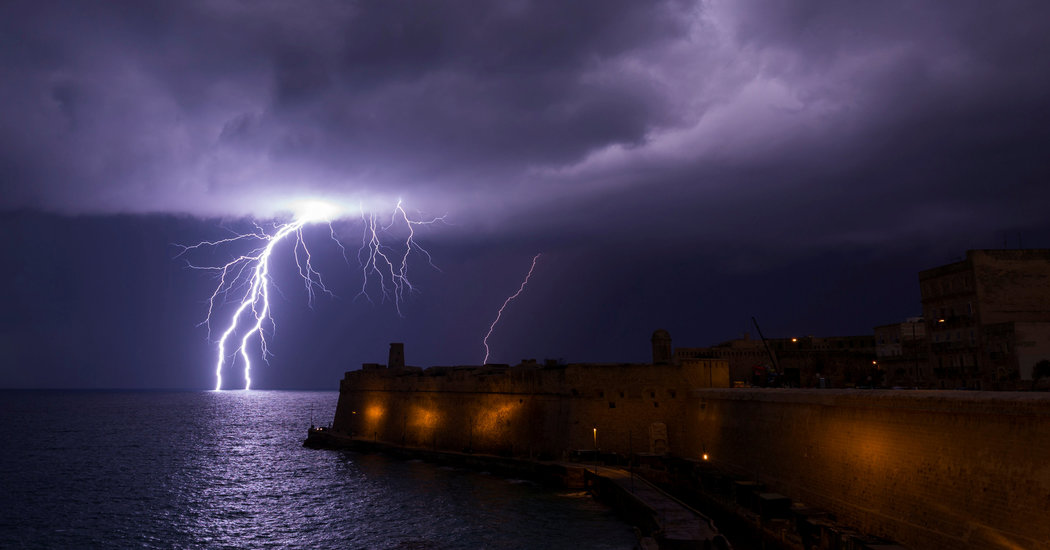The average lightning strike can pack a punch. But then there are superbolts. First identified in the 1970s by satellites designed to monitor nuclear explosions, they can be thousands of times more energetic than normal lightning.
But you’re even less likely to be struck by one: Scientists have mined data from the roughly 80 sensors of the World Wide Lightning Location Network to study where superbolts are found. They were surprised to discover that the most powerful lightning doesn’t occur in known lightning hot spots, or at times of year when lightning usually strikes. Instead, they reported last week in the Journal of Geophysical Research: Atmospheres, superbolts predominantly occur over open water from November through February.
[Like the Science Times page on Facebook. | Sign up for the Science Times newsletter.]
Robert Holzworth, an atmospheric and space physicist at the University of Washington, and his colleagues analyzed more than 1.7 billion radio-frequency observations of lightning. Focusing on only the most robust detections of lightning strikes from 2010 to 2018, Dr. Holzworth and his team tagged 8,171 superbolts above one million Joules. That’s about 0.0005 percent of the lightning recorded by the lightning detection network, which he leads.
“It’s a tiny fraction,” Dr. Holzworth said. Superbolts are so rare that even he, one of the world’s foremost lightning experts, has never witnessed one firsthand.
Dr. Holzworth and his team determined the location of each lightning strike by triangulation, because radio signals produced by lightning bounce off parts of Earth’s atmosphere.
“They can travel nearly around the world,” Dr. Holzworth said. By accurately timing the arrival of radio waves at multiple sensors in the network, his team estimated the location of each strike to within a few miles.
Superbolts appear to be a different breed of lightning than their smaller brethren.
First, they tend to occur over water — superbolts are most prevalent over the eastern North Atlantic and the Mediterranean Sea. That was unexpected because lightning in general tends to occur over land in the Americas, sub-Saharan Africa and Southeast Asia.
“These three regions seem to produce the vast majority of global lightning,” Dr. Holzworth said. “That’s not where we find the superbolts.”
Superbolts also have a different seasonality than less-energetic bolts: Over three quarters of them were recorded during Northern Hemisphere winters from November through February. But lightning detection networks have shown that lightning in general peaks in warmer seasons. This discovery was “totally unexpected,” Dr. Holzworth said.
What explains superbolts’ oddball nature? They may predominantly form over water because there aren’t obvious places for lightning to strike. “There’s not a lot of towers or trees,” Dr. Holzworth said. So charge builds up until it’s released all at once as a superbolt striking the water, researchers think.
The prevalence of superbolts from November through February may result partly because of warm ocean currents that circulate in the winter, Dr. Holzworth said. “When you have cold air flow over warm water, you can get strong convection.”
In the future, Dr. Holzworth and his collaborators want to study the destructive impact of superbolts when they strike land. The researchers have their eye on South America, the one place where there is significant superbolt activity over a continent, Dr. Holzworth said.
“We’d like to go look into superbolts over the Andes,” he said.
Source: Read Full Article





